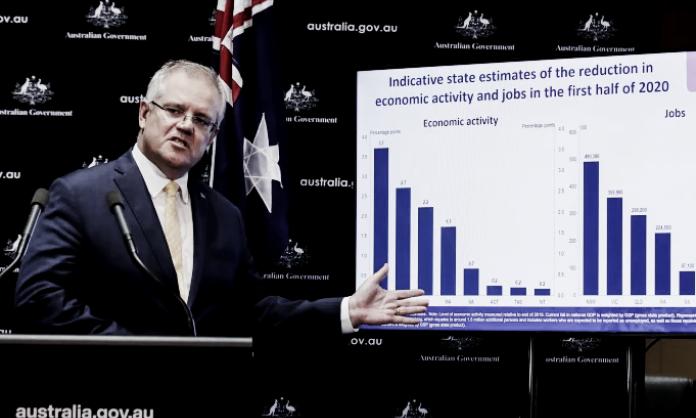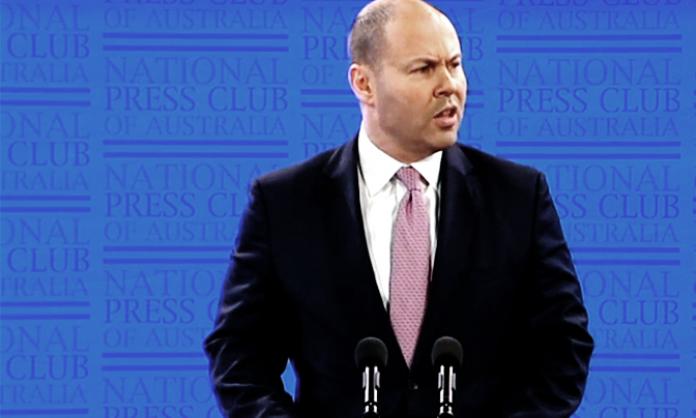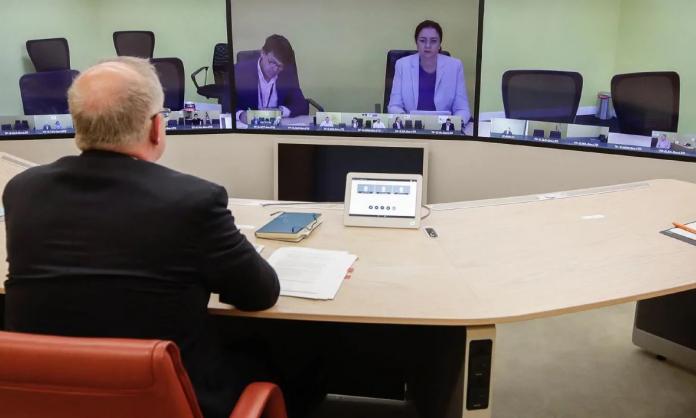Despite all the talk of “we’re all in this together”, workers and the poor have paid the price for the pandemic. Up to 1 million people have been added to the unemployment pile since mid-March. One-quarter of those still in work have had their hours reduced, resulting in several million suffering cuts to their weekly pay.
All told, it’s been a catastrophe for workers thus far. But worse is to come. The Grattan Institute, which calculated the impact of social distancing measures on the ability of businesses to stay open, estimated in April that between 1.9 million and 3.4 million workers – between 14 percent and 26 percent of Australian workers – could soon be out of work. This includes up to half of all workers in hospitality and large numbers in retail, arts and education and training.
Because the industries and occupations most affected by the shutdowns are dominated by low-paid workers, particularly younger and women workers, these sections of the workforce will be hardest hit. While projections of further mass lay-offs taking unemployment to 26 percent may not come to pass if social distancing regulations are eased in coming weeks, they illustrate the potential hit that workers face.
The government is promoting its JobKeeper program, which provides employers with a fortnightly subsidy of $1,500 to keep workers on the books for up to six months, as its response to the wave of mass sackings and stand-downs. But the government has excluded 1.4 million workers on temporary visas, 1.1 million casual workers who have worked for their boss for less than 12 months and tens of thousands of international students currently resident in Australia.
It is too early to say definitively, but we know that some bosses, faced with having to cover wages through to early May, when the first backdated $1,500 allowances are paid by the government, have simply stood down or sacked workers without applying for JobKeeper. Businesses that have gone into hibernation because the boss wants to avoid paying payroll tax while staff are idle have also not rushed to apply for the program: better simply to sack the workforce and pick up new workers when the business reopens.
The JobKeeper program also comes with a nasty sting in the tail – the forfeiture of a string of industrial rights and the empowering of bosses to determine when, where, how and for how many hours workers are actually employed, while workers have no right to refuse their directions. In addition, trade unions are already receiving reports of employers cutting the hours of full time workers so they do not have to exceed the $1,500 fortnightly JobKeeper subsidy when paying them, while at the same time increasing the hours of casual workers so that they can fully exploit the subsidy without having to pay an extra cent in wages. Others are capitalising on confusion to do illegal things: for example, telling workers that they have to use their annual leave even if their leave balance is less than two weeks, or wrongly telling them that receiving JobKeeper payments is conditional on signing a new employment contract that can involve transferring full timers to casual contracts.
The exclusion of international students from the JobKeeper program illustrates the contempt with which the government treats them. These students, who have paid huge fees to study here and who in some cases have been working and paying taxes in Australia for years, have been told to “go home”, something which travel bans and flight cancellations make impossible. The vast majority stranded in this country are being left with little assistance: in only a few cases have state governments and universities stepped in to offer emergency cash grants and allowances.
Many workers ineligible for the JobKeeper program but dumped on the dole have had to wait for weeks to get their JobSeeker payment (the old Newstart) because of processing delays caused by the huge numbers applying and the years of job cuts at Centrelink, which have left it seriously short staffed. In the meantime, the jobless have been forced to use up savings or borrow from friends or family to pay their way.
Many of the country’s 2.5 million private renting households are doing it tough. On 29 March, the federal government announced a six-month moratorium on evictions, but its only real concern was commercial tenants, a core Coalition constituency. As for residential tenants, the states were left to draft legislation to put a moratorium into effect. State governments, both Labor and Coalition, eventually passed legislation in late April seriously reducing the effectiveness of the trumpeted eviction moratorium. In some cases, they outright attacked tenants’ rights.
The legislation in Queensland, for example, supposedly prevents landlords from evicting tenants and provides for conciliation through the Residential Tenancies Authority in the event of a dispute, with the expectation that rent should not exceed 30 percent of income. But the effectiveness of the provision is limited by the initiative being left in the hands of the landlords. Only if they apply to the state government for land tax exemption will they be required to negotiate with tenants or pass on rent reductions. Where they choose not to do so, potentially thousands of tenants will be left to the law of the real estate jungle, negotiating with landlords without any real protections.
Landlords are doing their best to evade any responsibility to cut rents. There are now many reports of landlords demanding detailed personal financial information from tenants, including written evidence that their financial distress is related to COVID-19, as a precondition for engaging in negotiations over rent relief. This requirement puts a particular burden on workers whose bosses have gone bust or who are otherwise uncooperative and those renters working cash in hand. Delays in acquiring and providing what the landlord or agent deems acceptable paperwork will result in rent backlogs piling up for weeks.
Rental deferrals are no substitute for reductions or full waivers. How are renters meant to pay back accumulated rent months into the future when they often barely make ends meet on a month to month basis in normal times? Adding interest to deferrals, as some landlords are insisting on, will make the situation worse.
Added to the huge financial cost that has been imposed on the working class is the psychological stress produced by lay-offs, stand-downs, accommodation insecurity and the requirement that they perform work in unsafe conditions or undergo social isolation. Counselling service Lifeline reports that it answered 90,000 calls for help in March, the highest monthly total in the organisation’s 56-year history. A Lifeline representative told the Guardian: “Many are facing circumstances they could never have envisaged they would be in. Many are feeling that their life is worthless”.
--------------------
There is no prospect of any "snapback" in jobs in coming months, even if some of the social distancing measures are eased. The surge in retail spending as people stocked up in supermarkets at the beginning of the crisis, which propped up employment in the sector as Coles and Woolworths hurriedly recruited thousands of new workers, is now abating as people stay in their homes, as jobs are lost and incomes fall, and as many retail outlets shut down for the duration or simply close their doors for good. Many more jobs will be at risk.
Spending by international students, overseas tourists and newly arriving migrants has for years been an important buffer for jobs in construction – hotels, apartment buildings – along with retail and hospitality. But with travel bans ongoing, employment in construction, hospitality and retail will suffer. Even leaving aside the direct impact of COVID-19 on jobs, the international economic downturn now gathering pace will be a blow to businesses dependent on international trade. Stunted economic growth in China will hit demand for Australian coal, LNG and iron ore as well as incoming tourist and student numbers.
Even leaving aside the possibility of a much more serious second wave of the COVID-19 virus, something that cannot be ruled out given the pressure from some capitalists to quickly relax restrictions on business, many smaller capitalists will be reluctant to restart businesses any time this year. Many big businesses that do reopen will hold off new investments to protect their cash flows.
Many capitalists may be looking at balance sheets full of red ink this autumn, but at the same time see the shutdowns as an opportunity to restructure their businesses to wipe out jobs and cut wages and conditions and in the process destroy their rivals.
Flight Centre, for example, has launched a $1.9 billion cost-cutting exercise, shutting 428 of its 944 stores in Australia and standing down 6,000 staff out of its 20,000-strong workforce. At the same time, it is raising $900 million on capital markets to ensure it can take advantage of an anticipated future rebound in the market with much smaller outlays on staff and property.
In the airline industry, the future of Virgin Australia is in doubt. If it survives, it will employ a smaller number of staff in inferior conditions. If the company goes into liquidation, Qantas will be in prime position to dominate the market and jack up prices. Having stood down 20,000 staff itself, Qantas will be looking for ways to hack away at staff numbers and, in conditions of severe job insecurity, bully the remaining staff to accept worse conditions.
In higher education, university administrations shut down campuses in March to prevent infection of students and staff. But before doing so, they laid off many hundreds of casual workers in response to the collapse in international student numbers. It is unlikely that these students, whose fees prop up the entire industry, will return in significant numbers for 18 months or more. The vice-chancellors are now drawing up plans to restructure the universities and already announcing cuts in jobs, conditions and pay, which will be extended long after the immediate crisis is over.
Getting more out of fewer staff is now the name of the game for most bosses: while 24 percent of workers worked fewer hours than usual in the first week of April, 12 percent were working more: the bosses are simply offloading the work onto the shoulders of the staff who remain.
The broader context for such initiatives is the escalating demands by big employer groups for another round of industrial relations and economic “reform”. The Morrison government is happy to oblige, as is evident in the provisions in the JobKeeper scheme, which give the bosses widespread discretion over how they deploy staff, and its decision to cut the notice period to vote on variations to enterprise agreements from seven days to just one, allowing the bosses to ram through changes before resistance can be organised.
Treasurer Josh Frydenberg has nominated the anti-union Ensuring Integrity Bill as “the first order of business to get through parliament” when it resumes, with cuts to company tax for the country’s biggest corporations to follow. Frydenberg said that the government had “no plans” to raise the GST but, according to a report in the Guardian, did not rule it out. Reserve Bank governor Phillip Lowe has added his voice to the chorus of business lobbyists demanding changes “to reinvigorate the country’s growth and productivity agenda”.
The government may refer to the current crisis as one in which Australians have all pulled together, but it is clear from this account that the crisis is falling mainly on the shoulders of the working class. Some businesses may be going bust, but those that don’t are using the opportunity to carry through wholesale reductions in employment, wages and conditions for staff. This will be the pattern in coming years unless workers begin to fight back.












